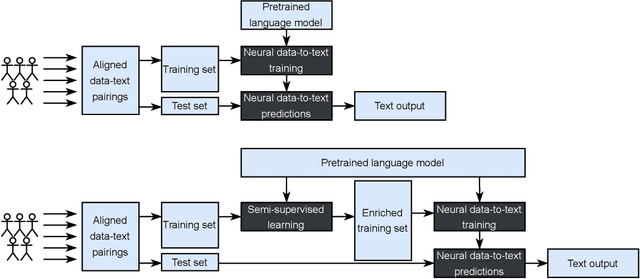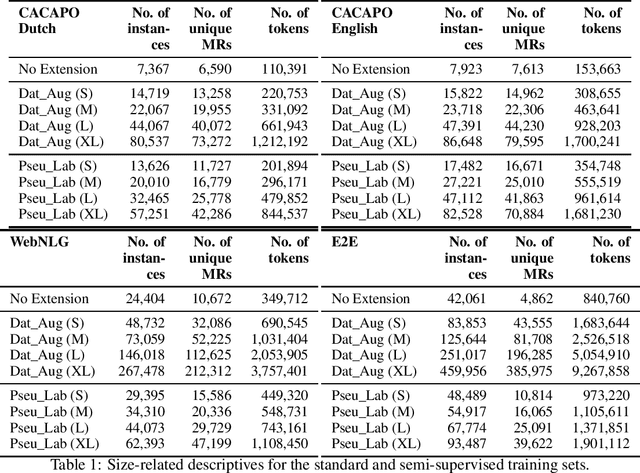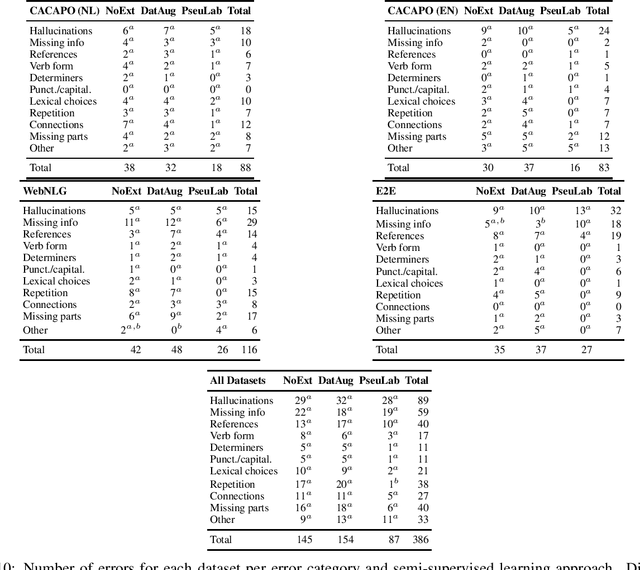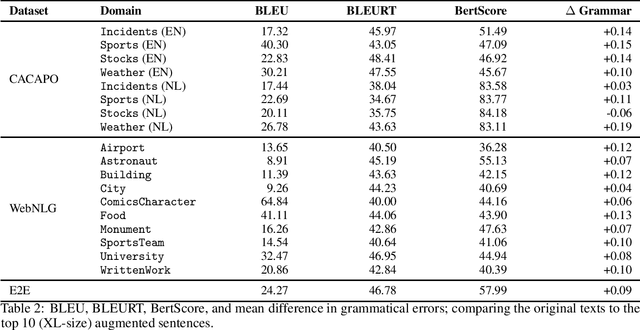Neural Data-to-Text Generation Based on Small Datasets: Comparing the Added Value of Two Semi-Supervised Learning Approaches on Top of a Large Language Model
Paper and Code
Jul 14, 2022



This study discusses the effect of semi-supervised learning in combination with pretrained language models for data-to-text generation. It is not known whether semi-supervised learning is still helpful when a large-scale language model is also supplemented. This study aims to answer this question by comparing a data-to-text system only supplemented with a language model, to two data-to-text systems that are additionally enriched by a data augmentation or a pseudo-labeling semi-supervised learning approach. Results show that semi-supervised learning results in higher scores on diversity metrics. In terms of output quality, extending the training set of a data-to-text system with a language model using the pseudo-labeling approach did increase text quality scores, but the data augmentation approach yielded similar scores to the system without training set extension. These results indicate that semi-supervised learning approaches can bolster output quality and diversity, even when a language model is also present.
 Add to Chrome
Add to Chrome Add to Firefox
Add to Firefox Add to Edge
Add to Edge